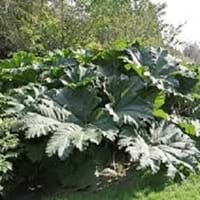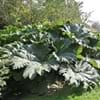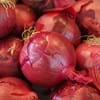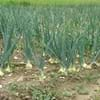Life Span
Perennial
Perennial
Origin
Hybrid origin, Eastern Asia, India, Nepal, China
North America
Types
Victoria Rhubarb
Colorado Red Rhubarb
Turkish Rhubarb
Bergmann's Elm, Chestnut-leafed Elm, Hangzhou Elm
Number of Varieties
Not Available
Habitat
gardens, Grassland, Humid climates, Tropical regions, Urban areas
Woodland Garden Canopy
USDA Hardiness Zone
3-7
3-9
Sunset Zone
2a, 2b, 3a, 3b, 4, 5, 6, 7, 14, 15, 16, 17
1a, 1b, 2a, 2b, 3a, 3b, 4, 5, 6, 7, 8, 9, 10, 11, 14, 15, 16, 17, 18, 19, 20, 21
Habit
Clump-Forming
Upright/Erect
Flower Color Modifier
Not Available
Bicolor
Fruit Color
Not Available
Tan
Leaf Color in Spring
Green
Light Green
Leaf Color in Summer
Green
Dark Green
Leaf Color in Fall
Green
Light Yellow
Leaf Color in Winter
Light Green
Not Available
Leaf Shape
Compound
Ovate
Plant Season
Summer
Spring, Summer, Fall, Winter
Sunlight
Full Sun, Partial Sun
Full Sun
Type of Soil
Clay, Loam
Loam
The pH of Soil
Acidic, Neutral
Acidic, Neutral
Soil Drainage
Well drained
Average
Bloom Time
Summer, Late Summer
Early Spring
Tolerances
Drought
Pollution
Where to Plant?
Ground
Ground
How to Plant?
Stem Planting
Budding, Grafting, Seedlings, Semi-hardwood cuttings, Softwood cuttings
Plant Maintenance
Medium
Medium
Watering Requirements
Do Not over Water, Requires regular watering, Use Mulches to help prevent water loss during hot and windy weather, Water Deeply
Average Water Needs, Do Not over Water, Requires regular watering
In Summer
Lots of watering
Lots of watering
In Spring
Moderate
Moderate
In Winter
Average Water
Average Water
Soil pH
Acidic, Neutral
Acidic, Neutral
Soil Type
Clay, Loam
Loam
Soil Drainage Capacity
Well drained
Average
Sun Exposure
Full Sun, Partial Sun
Full Sun
Pruning
Remove damaged leaves, Remove dead branches, Remove dead leaves
Remove damaged leaves, Remove dead branches, Remove dead leaves, Remove dead or diseased plant parts, Remove deadheads
Fertilizers
All-Purpose Liquid Fertilizer
Complete balanced fertilizer, fertilize in spring
Pests and Diseases
Red blotch
Red blotch
Plant Tolerance
Drought
Pollution
Flower Petal Number
Not Available
Single
Foliage Texture
Bold
Medium
Foliage Sheen
Matte
Matte
Attracts
Not Available
Birds, Butterflies, Not Available
Allergy
Skin irritation
Pollen
Aesthetic Uses
Not Used For Aesthetic Purpose
Not Used For Aesthetic Purpose
Beauty Benefits
Not Available
Good for skin and hair
Environmental Uses
Air purification
Air purification, Nesting sites for birds, Shadow Tree
Medicinal Uses
Not Available
Antispasmodic, Astringent, Birthing aid, Haemostatic, Salve
Part of Plant Used
Whole plant
Bark, Fibre, Leaves
Other Uses
Culinary use, Used as Ornamental plant
Container, String, Used for woodware, Used in paper industry
Used As Indoor Plant
No
No
Used As Outdoor Plant
Yes
Yes
Garden Design
Edible, Herb / Vegetable, Mixed Border
Feature Plant, Shade Trees, Street Trees
Botanical Name
RHEUM x hybridum
ULMUS americana 'Augustine'
Common Name
Hybrid Garden Rhubarb, Rhubarb
American Elm, Augustine Elm
In Hindi
एक प्रकार का फल
American Elm Tree
In German
Rhabarber
Amerikanische Ulme
In French
Rhubarbe
Américaine Elm Tree
In Spanish
Ruibarbo
Olmo Americano Árbol
In Greek
Ραβέντι
American Elm Tree
In Portuguese
Ruibarbo
Árvore de olmo americano
In Polish
Rabarbar
Amerykańska Elm Tree
In Latin
RHEUM
Latin ulmo
Phylum
Tracheophyta
Magnoliophyta
Class
Not Available
Magnoliopsida
Order
Caryophyllales
Urticales
Family
Polygonaceae
Ulmaceae
Clade
Angiosperms, Core eudicots, Eudicots
Angiosperms, Eudicots, Rosids
Tribe
Not Available
Not Available
Subfamily
Not Available
Not Available
Number of Species
Not Available
Season and Care of Rhubarb and American Elm
Season and care of Rhubarb and American Elm is important to know. While considering everything about Rhubarb and American Elm Care, growing season is an essential factor. Rhubarb season is Summer and American Elm season is Summer. The type of soil for Rhubarb is Clay, Loam and for American Elm is Loam while the PH of soil for Rhubarb is Acidic, Neutral and for American Elm is Acidic, Neutral.
Rhubarb and American Elm Physical Information
Rhubarb and American Elm physical information is very important for comparison. Rhubarb height is 60.00 cm and width 120.00 cm whereas American Elm height is 3,900.00 cm and width 3,700.00 cm. The color specification of Rhubarb and American Elm are as follows:
Rhubarb flower color: Ivory
Rhubarb leaf color: Green
American Elm flower color: Green
- American Elm leaf color: Light Green
Care of Rhubarb and American Elm
Care of Rhubarb and American Elm include pruning, fertilizers, watering etc. Rhubarb pruning is done Remove damaged leaves, Remove dead branches and Remove dead leaves and American Elm pruning is done Remove damaged leaves, Remove dead branches, Remove dead leaves, Remove dead or diseased plant parts and Remove deadheads. In summer Rhubarb needs Lots of watering and in winter, it needs Average Water. Whereas, in summer American Elm needs Lots of watering and in winter, it needs Average Water.





